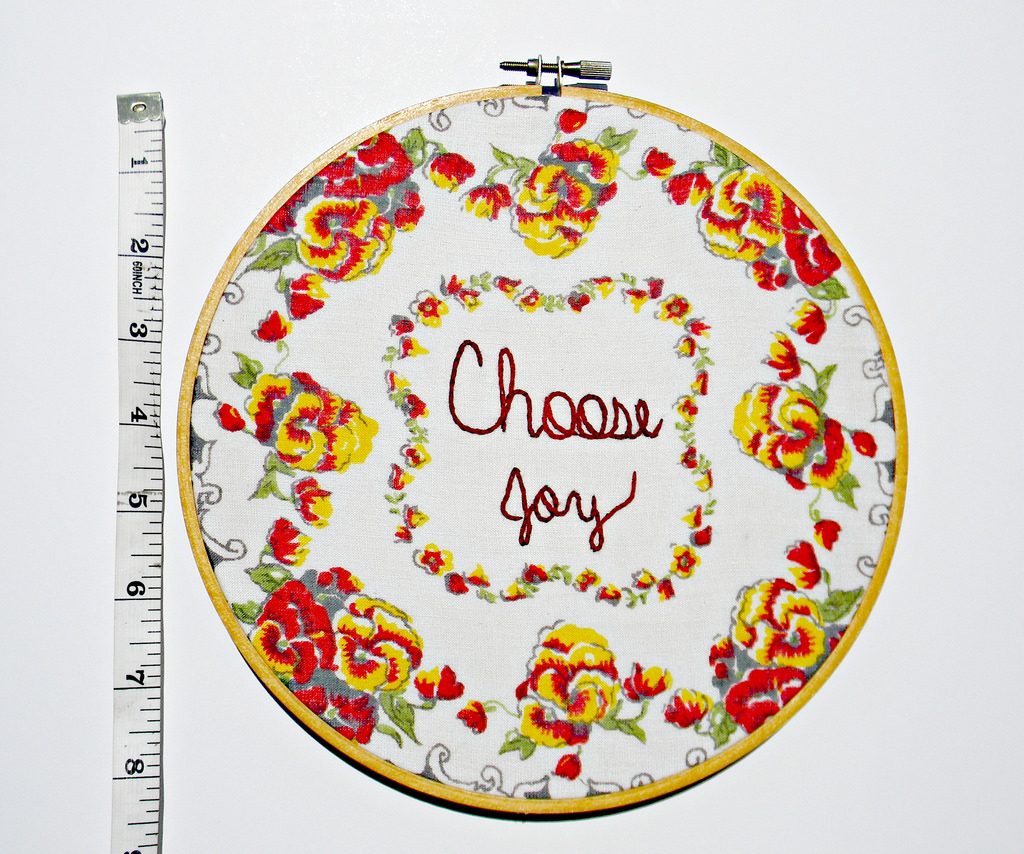Needlepoint frames hold the canvas taut while you sew, freeing up both hands for stitching. A frame can help produce straighter stitches and reduce the need for blocking.
While many small needlepoint projects can be sewed by just holding the canvas in your lap, using an embroidery hoop or frame to keep the craft area secure for stitching can make the stitching work go more evenly and easily.
Advantages of Using an Embroidery Hoop or Needlepoint Frame
Mounting the needlepoint canvas on a frame that holds the work area tight for stitching can be helpful in some ways:
- A taut canvas makes stitches easier to see and count.
- Both hands are free to guide the needle and yarn, which makes stitching go faster.
- When the canvas is taut, stitches are more even, with more uniform tension on the yarn, which greatly decreases the need to block the project once it’s completed to straighten distorted areas.
- Canvas on a frame needs less handling, so there is less wear and tear on the yarn, and the project stays neat even if it’s worked on for months and years.
Disadvantages of Using a Hoop or Frame
Because the canvas is stretched taut, a frame makes it hard to “weave” the needle through the canvas and create several stitches at a time. A framed canvas also requires a lot of back-and-forth hand movement to push the needle through from front to back, then from back to front again. Holding the frame in position for stitching can be tiring to the hands and arms. To avoid fatigue or pain from gripping the frame, many needle pointers attach their frames to a lap or floor stand that holds the frame for them.
Needlepoint Hoop and Frame Options
Small pieces of canvas may not need any stretching at all. If you stitch without a hoop or frame, roll the canvas to a comfortable size instead of folding it while you work, to avoid distorting the finished piece. Canvas can be rolled around a dowel or a paper towel tube.
The size and gauge of the needlepoint canvas determine whether or not a hoop or frame will work better for a needlepoint project.
Embroidery Hoops for Petit Point (Canvas Gauge 16 or Higher)
Soft, flexible canvas can be secured in an embroidery hoop which consists of two tightly fitting rings of wood, plastic, or metal. The canvas is stretched over the inner ring and secured by the outer one. Most hoops have a screw to adjust how tightly they fit together.
Hooping can leave permanent marks in heavier canvas, though. Lower-gauge canvas should be stretched on a frame instead.
Stretcher Frames (Stretcher Bars)
Stretcher frames consist of two sets of wood strips that fit together into a rectangle. The entire canvas needs to fit inside the rectangle, with the inside dimensions of the frame measuring about an inch larger all around than the needlepoint canvas. The canvas is attached to the frame with thumbtacks, quilter’s tacks, brass needlework tacks, or staples. Stretcher frames can be found at art supply stores and come in a large variety of sizes. Reaching into the middle of a large stretcher frame to stitch can be uncomfortable, though. For larger projects, consider a scroll frame.
Scroll Needlepoint Frames
Scroll frames are popular because the area being worked on can be rolled to the most comfortable position for stitching. A scroll frame has two roller rods at the top and bottom, attached to two side arms. The roller rods are encased in fabric tubes. The needlepoint canvas is hand-basted or machine-sewn onto the tubes, then rolled tautly. Scroll frames are available in widths from 6” to 34”.
Ratchet Needlepoint Frames
A ratchet frame is a new variety of scroll frame that consists of two split end rails and two side sections with ratcheted rollers that move both ways. The canvas is locked between the two end rails and rolled back and forth on the rollers. Ratchet frames are available in three sizes: 12″, 18″ and 24″.
Needlepoint Lap and Floor Stands
A frame stand makes needlepoint even easier by freeing up the hand that otherwise would have to hold the frame in position for stitching. Lap frame stands are made for sewing while sitting. Floor stands can be used both sitting and standing.

